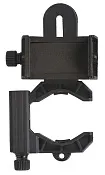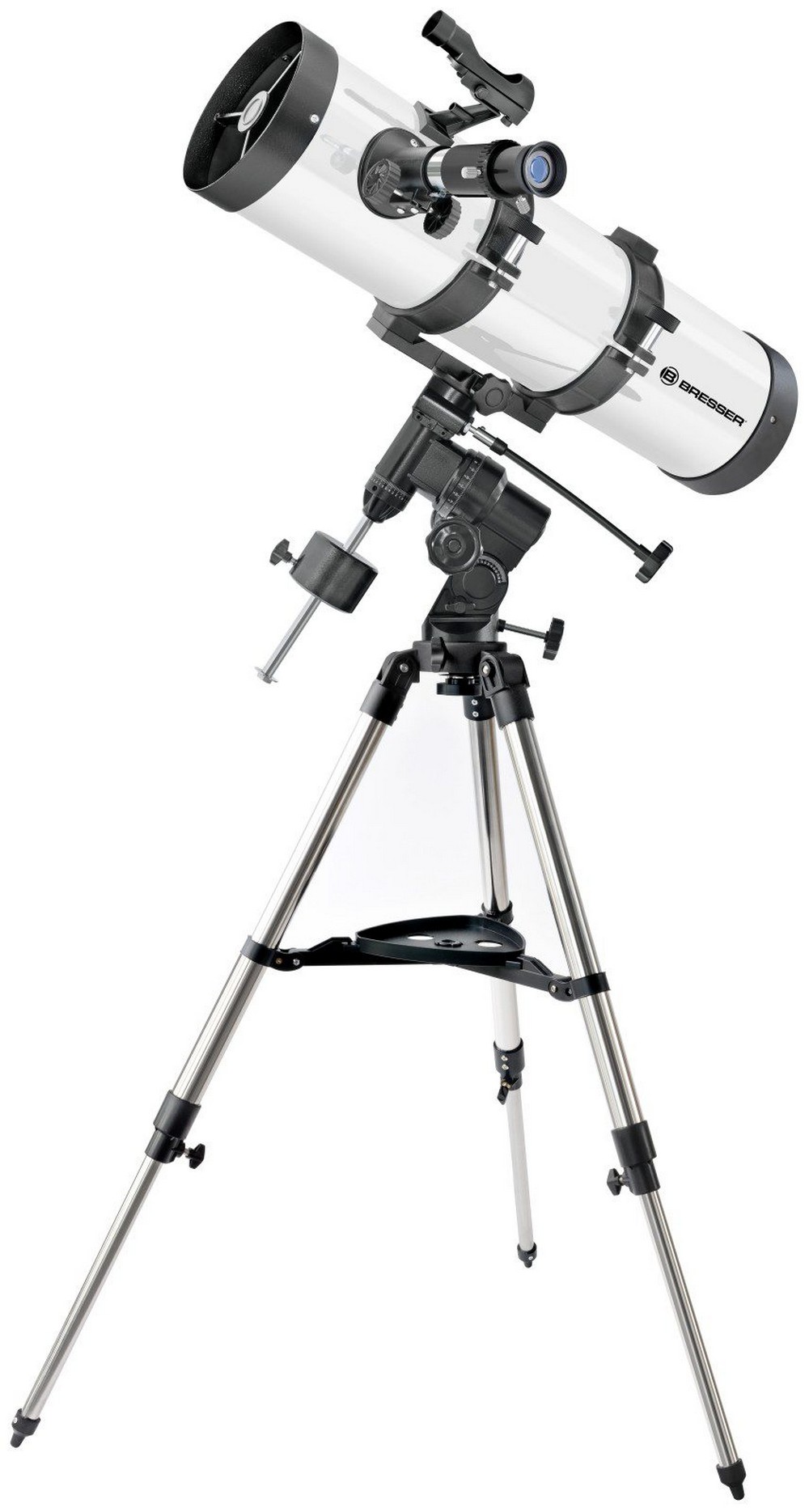Bresser 130/650 EQ3 Telescope
Newtonian telescope. Objective lens diameter: 130mm. Focal length: 650mm
| Product ID | 71122 |
| Brand | Bresser GmbH, Germany |
| Warranty | 2 years |
| EAN | 4007922000800 |
| Package size (LxWxH) | 50x87x24 cm |
| Shipping Weight | 13.9 kg |
Bresser 130/650 EQ3 Telescope features a main mirror aperture of 130mm and a focal length of 650mm. The telescope is excellent for beginners and advanced users who enjoy observing the night sky with all its amazing celestial objects. The telescope comes with a complete kit - mount, tripod, optical tube assembly and accessories. The telescope’s low focal length makes it perfectly suited for wide field observing, yet with its accessories it is excellent for the moon or planetary observing in detail. The stable equatorial mount makes the mirror telescope very easy to use. You only need to set the R.A. axis to the North Pole. You can also guide the Bresser 130/650 EQ3 Telescope on its object with only one hand.
Features:
- High-quality beginners' telescope with a large aperture
- Aperture: 130mm / focal length: 650mm
- Ideal for observing large celestial objects
- Equatorial mount with flexible shafts
- Field tripod for high stability
- Finderscope: red dot
- Control: manual/equatorial
The kit includes:
- Telescope with aluminum tripod and equatorial mount
- 2 eyepieces
- LED-finderscope
- 3x Barlow lens
- Stellarium software
- Telescope beginners guide
| Product ID | 71122 |
| Brand | Bresser GmbH, Germany |
| Warranty | 2 years |
| EAN | 4007922000800 |
| Package size (LxWxH) | 50x87x24 cm |
| Shipping Weight | 13.9 kg |
| Optical design | reflector |
| Optical scheme | Newtonian |
| Primary mirror diameter (aperture), mm | 130 |
| Focal length, mm | 650 |
| Magnification, x | 26 — 195 |
| Aperture ratio | f/5 |
| Resolution threshold, arcseconds | 0.88 |
| Eyepieces | Kellner K25mm, K10mm |
| Eyepiece barrel diameter, in | 1.25 |
| Barlow lens | 3x |
| Finderscope | red dot |
| Tripod height (adjustable), mm | 630–1080 |
| Telescope control | manual |
| Mount | equatorial, EQ3 |
and downloads
Convenient diagrams that describe how to install additional accessories on refractors and catadioptric telescopes
Find out how to assemble a telescope on an example of the Levenhuk Skyline 90x900 EQ telescope
This short guide will help you avoid typical mistakes and learn more about telescope and mounting types
The basics of astronomical observations for beginners
In this article we have gathered answers to some of the most frequently asked questions about telescopes
How telescopes work?
You can actually perform observations from your balcony!
All about telescope sizes, types, magnification, and mounts
Learn how to set up and use the telescope properly
Astronomy in light-polluted skies. Find out what you can observe in the city
Read an interesting comprehensive article on telescopes for little astronomers
Celestial objects you can observe with telescopes of different apertures
Colored and vivid images of galaxies, planets and star clusters entrance everyone who is fascinated by boundless space
Find an interesting review on the history of the changes to a refracting telescope
To make the process of choosing a telescope easier, we will tell you about the characteristics of the most popular types of telescopes today
Learn everything you need to know about refractor telescopes to make the right choice






